Starlink and Weather: What You Need to Know for Australian Conditions
Starlink and weather conditions can significantly impact your satellite internet experience, especially in remote Australian locations. Here's what you need to know:
- Rain: Reduces speeds by approximately 38-52% during heavy downpours, but rarely causes complete outages
- Snow: Self-heating dish melts light snow automatically; heavy accumulation may require manual clearing
- Wind: Dish tested to withstand 75 mph (120 km/h) winds when properly mounted
- Clouds: Light cloud cover has minimal impact; dense storm clouds may reduce speeds slightly
- Bushfire smoke: Generally minimal effect unless extremely dense
- Temperature range: Functions between -30°C to +50°C (-22°F to +122°F)
Living in rural Australia means dealing with everything from scorching heat waves to devastating bushfires. When you're relying on satellite internet as your primary connection, understanding how these conditions affect your service becomes crucial. While traditional satellite internet was notoriously unreliable during bad weather, Starlink's low-Earth orbit technology has changed the game significantly—though it's not completely immune to Mother Nature's influence.
I'm Aaron Wroblewski, founder of SpaceTek Australia, with over 15 years of experience helping Australians optimise their Starlink and weather resilience through properly engineered mounting solutions designed specifically for our harsh conditions. My background in satellite technology has shown me how the right installation can make all the difference between staying connected or losing signal when extreme weather hits.
How Starlink Works & Why Weather Still Counts
Ever wondered why your Starlink and weather interactions matter? Unlike traditional satellite internet hovering 35,786 km above Earth, Starlink's constellation sits in low Earth orbit (LEO) at just 550 km altitude. This closer proximity is a game-changer for rural Aussies, delivering two massive advantages:
First, you'll notice significantly reduced latency—typically 40-60ms compared to the sluggish 600+ms of older systems. Second, the closer satellites provide a stronger signal that can better punch through certain weather conditions.
But here's the catch—Starlink uses high-frequency Ku and Ka band radio waves (12-18 GHz and 27-40 GHz), which are more vulnerable to atmospheric interference than buried cables. When these radio waves encounter water molecules in rain, snow, or thick clouds, they experience attenuation—essentially a weakening of the signal as it travels through moisture.
Your Starlink dish isn't just a simple antenna—it's a sophisticated piece of tech with phased-array antennas that electronically track satellites as they zip across the sky. It even features a clever self-heating mechanism to melt snow and prevent ice buildup during those chilly winter mornings in alpine regions.
Microwave vs Fibre: Why the Sky Matters
Unlike fibre connections safely tucked away in protective conduits, Starlink and weather have a more direct relationship because the signal travels through open air. This makes it vulnerable to anything that might block or weaken the connection between your dish and the satellites overhead.
The signal needs what engineers call a "Fresnel zone"—think of it as a clear elliptical pathway between your dish and the satellite. Any obstruction in this zone—whether it's your gum tree, shed, heavy rain, or thick smoke—can degrade your connection quality.
This is why proper installation is so crucial for reliable performance. When we install Starlink systems across rural Australia, we're always looking for that clear view of the sky that will keep you connected through thick and thin.
Distance Advantage but Not Bullet-Proof
The beauty of Starlink's LEO constellation is its redundancy. With thousands of satellites criss-crossing overhead, your dish can quickly switch connections if one satellite's signal becomes compromised. The system also employs clever mesh routing, allowing signals to find the most efficient path through the network—much like how traffic apps reroute you around congestion.
However, this doesn't make the system impervious to all weather conditions. When severe weather affects a wide area, multiple satellites and ground stations may experience degraded performance simultaneously. This is particularly relevant during widespread events like cyclones or extensive bushfire smoke that can affect large portions of the network.
The good news is that these widespread disruptions are typically brief compared to traditional internet outages. While a fallen tree might take days to clear from power lines, a rainstorm passing through usually only affects your Starlink and weather performance for minutes rather than hours or days.
Understanding these fundamentals helps explain why your Starlink connection behaves the way it does during various weather events—and why proper installation with quality mounts from SpaceTek Australia can make all the difference in maintaining your connection when the weather turns nasty.
Starlink and Weather: Impact of Rain, Snow, Smoke & Wind
Let's face it – Australia throws some pretty wild weather our way. From torrential downpours in the tropics to snow-covered alpine regions and dust storms whipping across the outback, our climate can be as diverse as it is extreme. So how does your Starlink dish handle these conditions? I've seen how Starlink and weather interact across hundreds of installations, and the good news is – it's tougher than you might think.
Heavy Rain & Thunderstorms – Starlink and Weather Effects on Speed
When those dark clouds roll in and the heavens open, your Starlink connection will feel it – but probably not as much as you'd expect. Research from Oulu, Finland shows rain can reduce uplink speeds by about 52% and download speeds by around 38%.
In real-world terms, this means your typical 150+ Mbps connection might drop to around 75-90 Mbps during a heavy downpour – still plenty for most online activities. Light rain barely registers on the performance scale, while those intense summer storms might cause brief interruptions lasting seconds to minutes. This is worlds better than older satellite systems that would often drop completely during even moderate rainfall.
The high-frequency radio waves Starlink uses do struggle when passing through water droplets, but the system's redundancy (having multiple satellites overhead at once) helps maintain at least some connection in all but the most extreme conditions.
For those in storm-prone areas, proper grounding is essential. Lightning strikes can damage your equipment, so we recommend installing surge protectors for your router and considering disconnecting the system during severe electrical storms if possible. The good news? If lightning does strike, Starlink has been known to replace damaged kits free of charge.
Snow & Ice – Starlink and Weather Resilience in Alpine Regions
For our mates in Thredbo, Falls Creek, or Tasmania's highlands, snow presents its own challenges. Fortunately, Starlink dishes come with a clever built-in heating element that melts snow accumulation automatically.
This self-heating feature works brilliantly for light to moderate snowfall, keeping your connection humming along without intervention. During heavy snowstorms, however, snow can sometimes build up faster than the dish can melt it – in these cases, you might need to carefully clear it manually (a soft broom works well).
Ice storms present the biggest challenge, as ice can be stubborn and heavy. The dish operates in temperatures as cold as -30°C, so the Australian alpine climate won't faze the electronics, but ice removal requires careful attention to avoid damaging the sensitive surface.
For winter preparations, check out our guide to Preparing Your Starlink System for Winter Weather, which includes tips on mounting angles that help snow slide off naturally.
Cyclonic Winds & Dust Storms – Holding Alignment When It Blows a Gale
The good news is that wind itself doesn't directly interfere with your Starlink signal – those radio waves pass through moving air without a care in the world. The real concern is keeping your dish properly aligned and secure when the gales pick up.
Starlink dishes are officially rated to withstand winds up to 75 mph (about 120 km/h), though many users report successful operation in even stronger gusts. For context, that's Category 1 cyclone territory – impressive for a satellite dish!
The key factor here is mounting. A securely installed dish on a quality mount will maintain its position and keep your connection stable. This is precisely why we designed our SpaceTek mounts with Australian conditions in mind – from cyclone-prone Far North Queensland to the gusty southern coastlines.
For those in outback regions, dust storms present another challenge. While extremely dense dust can theoretically attenuate the signal slightly, the bigger concern is keeping your equipment clean and protected from that fine, abrasive red dust that seems to get everywhere. An occasional gentle rinse (when the dish isn't too hot) can help maintain optimal performance.
Bushfire Smoke & Haze – Does the Dish Cut Through the Gloom?
During bushfire season, vast smoke plumes can blanket entire regions for weeks. Fortunately, Starlink and weather research shows smoke particles are typically much smaller than the wavelength of Starlink's radio signals, meaning light to moderate smoke has minimal impact on your connection.
Even during the catastrophic 2019-2020 bushfire season, when smoke reached unprecedented levels, most Starlink users maintained connectivity. This resilience makes Starlink particularly valuable during emergencies when staying informed can be life-saving.
The bigger concerns during bushfire season are:
Power reliability – When the grid goes down, so does your Starlink unless you have backup power. Consider a UPS, generator, or solar setup for critical communications.
Physical safety of equipment – Extreme heat or direct fire exposure can damage your dish. If evacuation is necessary, your internet connection is obviously the least of your worries.
For those in bushfire-prone areas, Starlink's resilience to smoke makes it an excellent communication backup, especially when paired with a portable power station that can keep you connected during outages. When every update and evacuation notice matters, having a connection that cuts through the haze can make all the difference.
Extreme Events: Heatwaves, Lightning & Solar Storms
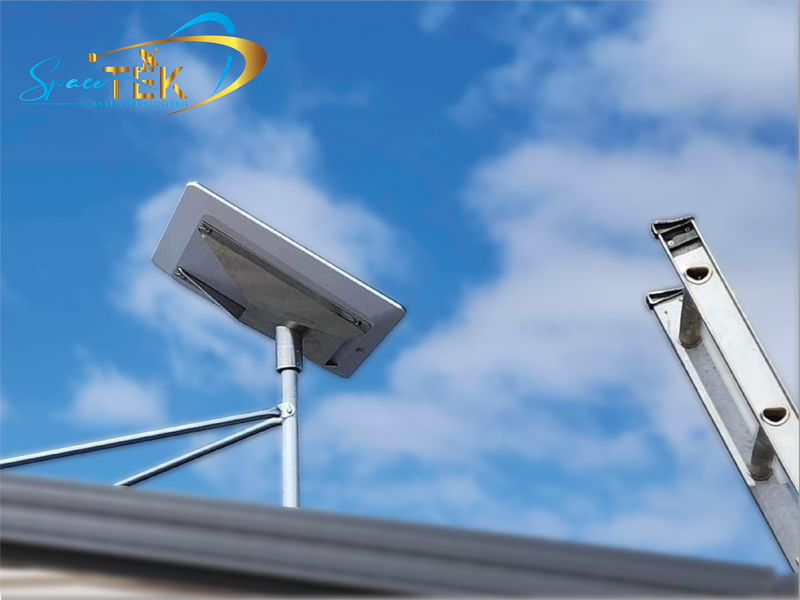
The land Down Under isn't just known for its beautiful beaches and outback trips – it's also home to some of the world's most extreme weather. When you're relying on Starlink and weather conditions to play nicely together, understanding how these more dramatic events affect your connection becomes essential.
Heatwaves & Thermal Throttling
Anyone who's spent a summer in Australia knows our heat can be brutal. Starlink dishes are tough, but they do have their limits – they're rated to operate up to +50°C. The challenge comes when that scorching Aussie sun beats down directly on your dish for hours, potentially pushing it beyond this threshold.
When things get too hot, your dish will protect itself by entering thermal shutdown mode. First-generation dishes typically power down around 50°C and won't restart until they've cooled to about 40°C. This means you might experience a temporary disconnection during the peak of a heatwave, especially if your dish is mounted in full sun.
I've seen this with customers in Western Australia and the Northern Territory, where ambient temperatures regularly climb above 40°C. The good news is there are simple ways to help your dish keep its cool:
Position your dish thoughtfully by finding a spot that gets morning sun but afternoon shade when possible. Ensure good airflow around the dish so heat can dissipate naturally. Some customers have even added small sun shades positioned carefully to avoid blocking the signal path.
For more practical tips on keeping your connection stable during those scorching summer months, check out our guide on managing Starlink Dishy in summer.
Lightning Strikes & Surge Protection
When storm season rolls around, lightning becomes a genuine concern for any electronic equipment – Starlink included. While the dish does include some built-in protection, it's not designed to withstand a direct lightning strike.
If lightning does hit your Starlink dish, you'll likely need replacement equipment. The silver lining is that SpaceX has been quite understanding about these acts of nature, often replacing lightning-damaged kits under warranty. I've helped several customers through this process after particularly nasty summer storms.
Your best defence is prevention:
- Install proper grounding that complies with local electrical codes
- Use quality surge protectors for all components
- Consider disconnecting your system during severe electrical storms if possible
The replacement policy is something I've seen – one of our customers in the Sunshine Coast hinterland had their dish struck during a particularly fierce summer storm, and SpaceX replaced the kit free of charge. While this isn't guaranteed for every situation, it shows SpaceX understands the nature of satellite internet in challenging environments.
Solar Storms & Satellite Drag – Space Weather You Can't See
Here's something most people don't think about – space has weather too! Solar and geomagnetic activity might sound like something from a sci-fi movie, but they have real impacts on satellite operations. Recent NASA research has shown that geomagnetic storms heat Earth's upper atmosphere, increasing drag on satellites in low Earth orbit.
For the Starlink constellation, this increased drag can force satellites to reenter the atmosphere up to 10-12 days earlier than planned. It can also affect the constellation's coverage patterns and require SpaceX to adjust orbital parameters more frequently.
The good news is that most users won't notice these effects directly. SpaceX actively manages the constellation to compensate for these space weather events, rerouting connections through unaffected satellites when needed. It's a fascinating behind-the-scenes dance that keeps your internet flowing even when the sun throws a cosmic tantrum.
While these space weather events rarely cause noticeable disruptions for most users, they represent yet another way that Starlink and weather – even the kind happening millions of kilometres away – interact to influence your connection. It's just one more reason I'm passionate about helping Australians set up their systems properly from the start with mounting solutions designed to weather everything from earthly storms to cosmic ones.
Minimising Weather-Related Disruptions: Installation, Maintenance & Backup Power
When it comes to keeping your Starlink and weather challenges in check, I've found that preparation truly makes all the difference. After helping hundreds of Aussie customers through everything from cyclones to bushfires, I can tell you that a thoughtful setup now saves enormous headaches later.
Smart Mounting Choices for Remote Australia
The single most important decision you'll make for weather resilience is how and where you mount your Starlink dish. A properly mounted dish stays aligned during high winds, sheds water effectively in downpours, and maintains that crucial clear line of sight to the satellites overhead.
At SpaceTek Australia, we've developed our mounting solutions specifically with the harsh Aussie climate in mind. Living in a coastal area myself, I've seen how quickly standard hardware can corrode in salt spray, which is why we use rust-resistant aluminium construction across our entire range. Our adjustable mounts let you find that perfect angle for optimal signal, whether you're installing on a tin roof in the outback or a weatherboard home in Tasmania.
Your ideal mount should lift the dish well clear of potential obstructions, provide rock-solid stability even when the southerlies are howling, and include proper drainage to prevent water pooling. For cyclone-prone areas up north, our heavy-duty hardware gives you that extra peace of mind when the wind picks up and the rain comes in sideways.
Maintenance Habits That Pay Off Year-Round
A little regular TLC goes a surprisingly long way with Starlink. I recommend setting a quarterly reminder to give your setup a quick once-over – it only takes a few minutes but can prevent major headaches.
Start by clearing any debris that's accumulated on or around your dish. Those gum leaves might seem harmless, but they can trap moisture and eventually affect signal quality. While you're at it, open the Starlink app and run the obstruction checker to make sure you're still maintaining that clear view of the sky – trees have a habit of growing into your signal path when you're not looking!
Check that all your mounting hardware remains tight and secure, especially after stormy weather. Give the dish surface a gentle wipe down to remove dust, pollen, or the occasional bird dropping. And don't forget to keep your router and dish firmware updated – SpaceX regularly pushes improvements that can help your system better handle challenging weather conditions.
If you're heading into storm season, bookmark our troubleshooting tips for when Starlink drops out in stormy weather – they'll help you get back online quickly once conditions improve.
Backup Power & Redundancy for Emergencies
In my experience helping customers across rural Australia, I've found that power loss – not signal issues – is actually the most common cause of weather-related Starlink outages. When those summer storms roll through or bushfire season cuts power lines, keeping your system running becomes the main challenge.
For short outages, a quality Uninterruptible Power Supply (UPS) will keep you online through brief blackouts. For longer disruptions, portable power stations like the EcoFlow DELTA series offer several hours of runtime – enough to stay connected through most weather events. If you're in a truly remote location, pairing a generator with your system provides extended backup for those multi-day outages we sometimes face in the bush.
I always recommend that my customers in fire-prone areas maintain multiple communication options. Your Starlink might be your primary connection, but having a NOAA weather radio for emergency broadcasts and a satellite messenger device for worst-case scenarios creates valuable redundancy when it matters most.
For those going fully off-grid, combining Starlink with a solar and battery system is increasingly popular, especially in remote stations and properties where grid power isn't an option. This setup not only keeps you connected during weather events but provides sustainable, independent internet access year-round.
With proper installation, regular maintenance, and thoughtful backup planning, your Starlink can remain your digital lifeline through almost anything the Australian climate throws your way. The peace of mind that comes from knowing you'll stay connected – even when everything else goes sideways – is truly priceless.
Real-World Experiences & How Starlink Compares in Bad Weather
After working with hundreds of Starlink users across Australia's diverse landscapes, I've collected some fascinating insights into how these systems perform when Mother Nature throws her worst at us. Nothing beats real-world testing, and our customers have certainly put their Starlink systems through their paces in everything from cyclones to bushfires.
LEO vs GEO vs Fixed-Line During Storm Season
When the dark clouds roll in and the rain starts hammering down, not all internet connections are created equal. The differences become crystal clear:
Starlink (LEO) typically experiences what I call "graceful degradation" during heavy rain – speeds might drop by 30-50%, but you'll rarely face a complete blackout. Most importantly, when the heavy rain band passes, your connection bounces back almost immediately. This resilience is a game-changer for remote Australians who previously lost connectivity completely during storms.
Traditional satellite (GEO) services, by contrast, often surrender completely during even moderate rainfall. I've had customers tell me about frustrating outages lasting hours during weather that barely affects their Starlink connection. The higher orbit and different frequency bands make these older systems particularly vulnerable to rain fade.
Fixed-line (NBN) connections generally handle rain well until physical infrastructure takes a hit. The problem? When lines go down in remote areas, repair crews might take days or even weeks to restore service. I've seen this scenario play out repeatedly after cyclones and floods.
The research from Oulu, Finland backs up what my customers have been telling me for years – while Starlink and weather conditions definitely interact, the impact is both less severe and shorter-lived than with traditional satellite internet. This represents a genuine breakthrough for rural and remote connectivity.
Case Studies from Remote Communities
Some of the most compelling evidence comes from our customers in Australia's most challenging environments.
During the 2022-23 cyclone season, our Far North Queensland customers weathered Category 2 cyclonic conditions with their SpaceTek-mounted Starlink dishes standing firm. They reported speed reductions of about 30-40% during the heaviest rain bands, but maintaining any usable connection during such conditions was previously unthinkable with older satellite technology. One customer told me they were able to video call their family throughout the storm, providing invaluable peace of mind.
The Victorian high country presents different challenges. Several customers there have shared that their dish's self-heating feature handles moderate snowfall beautifully. One memorable account came from a customer near Falls Creek who experienced a particularly heavy snowstorm. They needed to manually clear the dish just once, after which the self-heating function kept the surface clear for the remainder of the storm. For alpine businesses that depend on reliable connectivity during winter, this resilience has been transformative.
Western Australia's mining regions have put Starlink and weather resilience to the test during severe dust storms. The feedback has been remarkably positive – connections maintain stability unless dust density reaches extreme levels. Several customers have noted the importance of occasional cleaning to prevent long-term accumulation, but otherwise, the system handles these challenging conditions admirably.
Perhaps most critically, I've heard several moving stories about Starlink providing lifeline connectivity during bushfire evacuations when mobile networks became congested or disabled. A family in rural Victoria told me how they relied on their Starlink connection to monitor emergency updates and communicate with relatives when all other services failed. The ability to maintain internet access for emergency updates proved literally lifesaving in these situations.
What these real-world experiences demonstrate is that with proper installation using quality mounts designed for Australian conditions, Starlink doesn't just survive our extreme weather – it provides a level of connectivity resilience that was previously impossible in remote areas. The combination of SpaceTek's purpose-built mounting solutions and Starlink's inherent advantages creates a communications lifeline that stands up to Australia's toughest challenges.
Frequently Asked Questions about Starlink and Weather
Does cloud cover alone knock out the signal?
Cloud cover by itself rarely causes problems with your Starlink connection. In fact, light to moderate clouds passing overhead won't even register as a blip in your browsing experience. Even when the sky is heavily overcast (up to 87.5% cloud cover), you'll typically only see about a 20% reduction in speeds compared to a mostly clear day.
It's only when those clouds turn into massive, dark storm systems loaded with moisture that you might notice your connection starting to struggle. And even then, Starlink tends to push through better than older satellite systems. Most users find they can continue streaming, browsing and video calling through all but the most severe weather events.
Is it safe to leave the dish powered during lightning?
This is one of our most common questions from Starlink and weather worried customers. While Starlink dishes do include some built-in lightning protection, I always remind people that no electronic device is truly lightning-proof.
For the best protection of your investment, I recommend a three-part approach:
- Make sure your installation includes proper grounding according to local electrical codes
- Install quality surge protectors for your router and connected devices
- If practical, disconnect the system during severe electrical storms
That said, I understand that maintaining emergency communications during storms is exactly why many rural Australians invest in Starlink. If keeping your connection is critical, consider adding a UPS or battery backup system that allows you to quickly reconnect after the immediate lightning danger passes. This way, you're balancing safety with the need to stay connected during emergencies.
How long do rain-related outages usually last?
The good news about Starlink and weather interactions is that rain-related outages are typically brief. Based on both research data and feedback from our customers across Australia:
Most rain-related interruptions last only seconds to minutes, not hours. Your connection will often slow down rather than drop completely, allowing basic functions to continue even during heavy rainfall. Only the most intense, sustained downpours typically cause outages lasting more than a few minutes.
What's impressive is how quickly service bounces back as rain intensity decreases. You'll often see speeds climbing back up while it's still raining, just not as heavily. This rapid recovery is a significant improvement over traditional geostationary satellite internet, which could leave you disconnected for hours during a rainstorm.
For our customers in tropical north Queensland who experience regular monsoon conditions, this resilience has been a game-changer. Where their previous satellite connections would drop for hours during the wet season, Starlink typically keeps them connected with only brief interruptions during the most intense cloud bursts.
If you're experiencing longer outages during rain, it might be worth checking your installation for proper alignment or obstructions that could be compounding the weather effects. Our team at SpaceTek Australia can help troubleshoot persistent weather-related issues to make sure you're getting the most reliable connection possible, even when the skies open up.
Rugged Accessories for Tough Australian Conditions
Living in the Australian outback means battling everything from scorching summers to cyclonic winds. Your Starlink dish faces these elements day in and day out—which is exactly why we've developed our range of accessories at SpaceTek Australia.
When we first started designing mounts for the harsh Australian climate, we knew ordinary hardware simply wouldn't cut it. That's why every mount we create features rust-resistant aluminium construction that stands up to coastal salt spray and torrential downpours alike. The difference is immediately noticeable when you compare our mounts to standard options—especially after a year in the elements.
"My dish survived Cyclone Jasper without budging an inch," one Far North Queensland customer told us recently. It's feedback like this that reminds us why we've focused so heavily on cyclone-rated hardware and reinforced mounting points that keep your dish secure when the wind picks up.
Our adjustable mounting systems are particularly popular with customers in tricky installation spots. Whether you're dealing with a steep roof pitch or need to clear nearby trees, being able to fine-tune your dish position makes all the difference between spotty service and rock-solid connectivity during Starlink and weather events.
For those in bushfire-prone regions, we've paid special attention to creating mounts with fire-resistant materials. In an emergency situation, our quick-release systems allow you to rapidly remove and relocate your dish if evacuation becomes necessary—a small feature that could make a huge difference when minutes count.
Even the humble cable gets an upgrade with our weather-resistant cable kits. Standard cables simply aren't designed for the UV exposure and temperature extremes of the Australian climate. Our custom kits feature additional protection against cracking and degradation, preventing one of the most common failure points in satellite installations.
I've personally tested our mounts through two wet seasons in the tropics, and they continue to perform flawlessly where lesser hardware would have long since surrendered to rust and corrosion. It's this real-world testing that informs every product improvement we make.
For a complete overview of what you might need for your specific installation scenario, our Starlink essentials accessories guide walks you through the options based on your location and local weather patterns. From simple roof mounts to complete off-grid solutions, we've developed accessories specifically for Australian conditions—because your internet shouldn't disappear just because the weather turns nasty.
Reliable Internet Starts with the Right Accessories
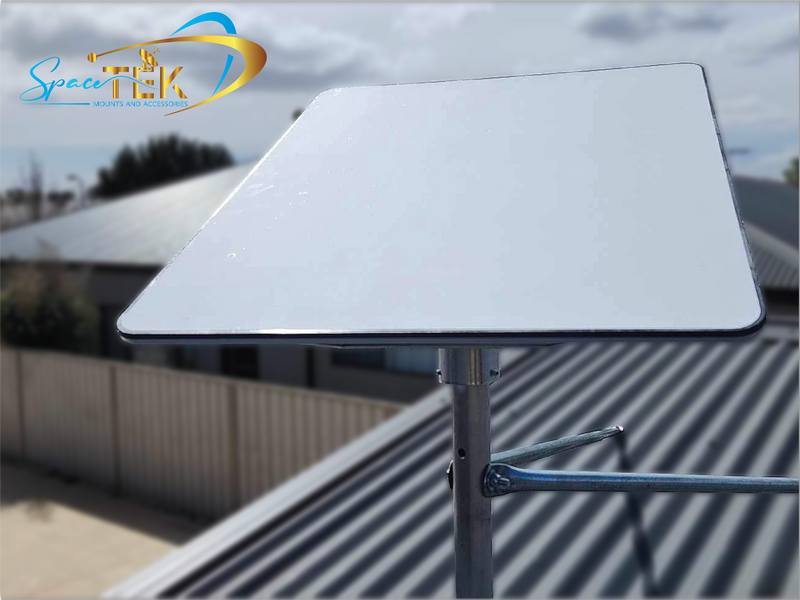
When it comes to Starlink and weather challenges, I've learned through years of working with rural customers that the right equipment makes all the difference. It's not just about having Starlink—it's about how you set it up to withstand everything the Australian climate throws at it.
The reality is that while Starlink technology is impressive, your connection is only as good as your installation. A poorly mounted dish can become a weather vane in high winds, and inadequate cable protection can lead to failures exactly when you need connectivity most.
What I've seen time and again across the Australian outback is that proper mounting is absolutely critical. A rock-solid mount keeps your dish perfectly aligned even when cyclonic winds are howling. Those few extra dollars spent on quality hardware can mean the difference between staying connected during emergencies or facing frustrating outages.
Regular maintenance isn't just a good idea—it's essential. I remember visiting a property in the Northern Territory where the owner hadn't cleared debris from around his dish for months. A simple five-minute job could have prevented the connection issues he was experiencing during the wet season.
Backup power solutions are another game-changer, especially in storm-prone areas. One of our customers in Far North Queensland maintained internet access throughout a three-day power outage after a severe storm, all because she'd invested in a quality portable power station that kept her Starlink system running.
The performance difference between Starlink and traditional satellite internet during bad weather isn't just noticeable—it's revolutionary. Where older systems would drop completely during moderate rain, Starlink typically maintains a usable connection, even if speeds decrease temporarily. For Australians in remote areas who rely on internet for safety, business, and staying connected, this reliability is invaluable.
At SpaceTek Australia, we've made it our mission to help fellow Aussies in remote and rural areas stay connected regardless of weather conditions. Our mounting solutions aren't just products—they're the result of countless conversations with customers across the country, designed specifically for the unique challenges of the Australian climate, from the tropical north to the alpine south.
By pairing Starlink's cutting-edge technology with properly engineered installation solutions, you can enjoy consistent, high-speed internet that keeps you connected when it matters most. Whether you're riding out a cyclone in Queensland, enduring a heatwave in the outback, or maintaining essential communications during bushfire season, the right accessories make all the difference.
I've seen how proper setup transforms the Starlink experience, turning what could be a weather-vulnerable connection into a rock-solid lifeline for rural Australians. That's why we're committed to providing mounting solutions that stand up to our unique climate challenges—because reliable internet shouldn't be a luxury, no matter where you call home.
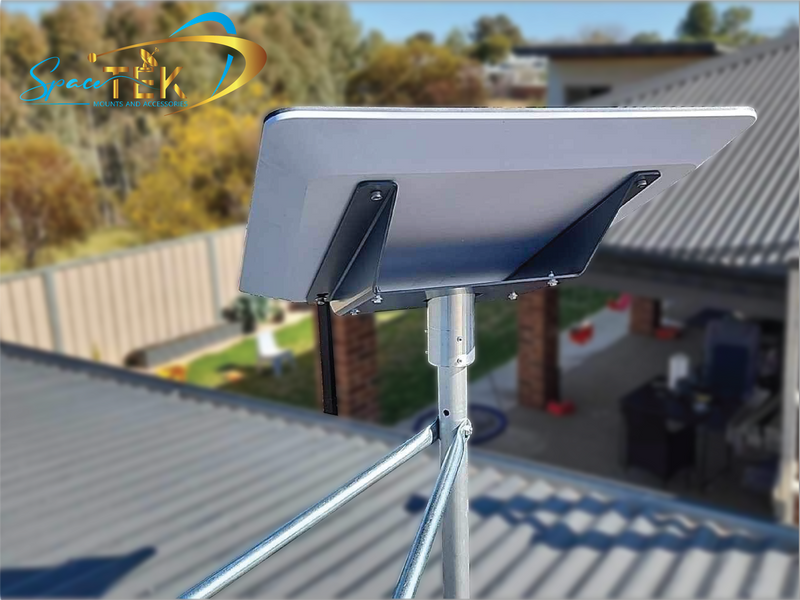
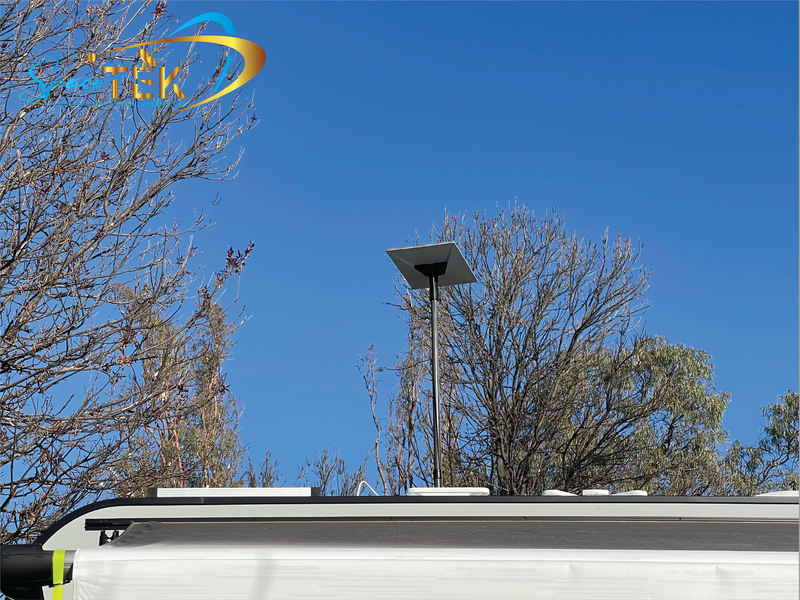
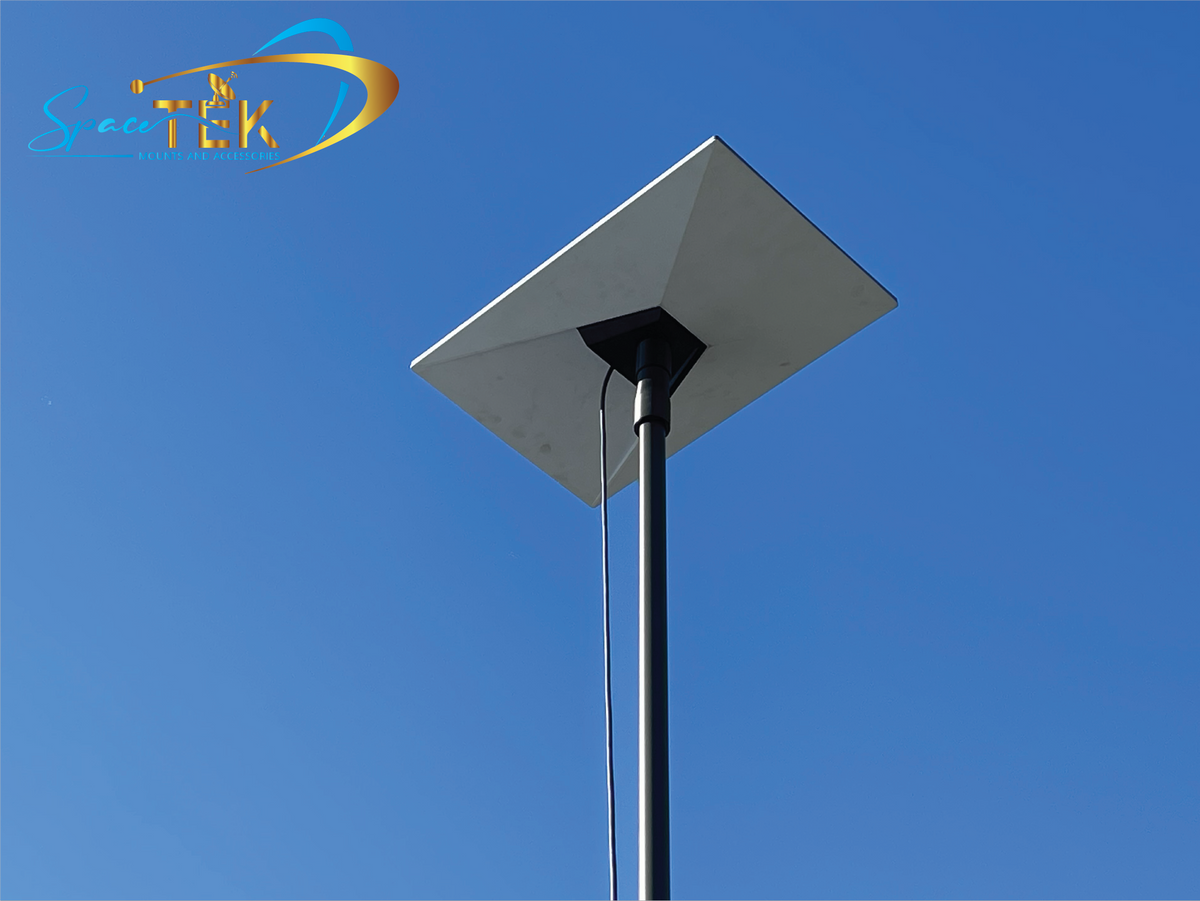
Leave a comment
This site is protected by hCaptcha and the hCaptcha Privacy Policy and Terms of Service apply.